7 Best Reverse ETL Tools for 2026
Summarize this article with:


Imagine a massive server room filled with high-powered computers, each humming with the potential to unlock valuable insights. They’re like encrypted messages, useless without the key to decipher them. This is often the fate of data stored in data warehouses. It's valuable but locked away in an unusable format for everyday business operations. Here’s where reverse ETL processes can help you manage and utilize valuable information. You can use specialized tools to direct the information stored in your data warehouse to your marketing, sales, and other teams. Thus, you can finally understand the encrypted message and put it to use.
In this article, you will explore the top reverse ETL tools of 2026, empowering you to unlock your data’s potential and transform it from a locked server room to a powerful growth engine.
Suggested Read: Top Data Integration Tools
What is Reverse ETL?
Reverse ETL, as the name suggests, is the opposite of the traditional Extract, Transform, and Load process used in data integration. While ETL focuses on bringing data from various sources into a central repository, reverse ETL is about extracting data from the data warehouses.
Here’s a breakdown of the reverse ETL process:
- Extract: Data relevant to a specific use case is extracted from the data warehouse. This data could be insights, aggregated metrics, or any other information that can add value to operational systems.
- Transform: The extracted data might need some transformation to fit the format and requirements of the destination system. This could involve filtering, cleaning, or restructuring the data.
- Load: The transformed data is then loaded into the target operational system. For example, CRM, marketing automation platform, etc.
Top 7 Reverse ETL Tools
Unlock the power of data integration with this roundup of the best 4 reverse ETL tools for you to use in 2026.
1. Census
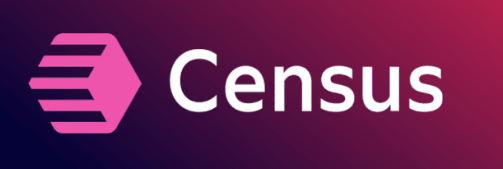
Census is a platform that solely focuses on reverse ETL. It boasts a user-friendly interface and powerful features like data partitioning, segment creation, etc. Census simplifies data activation by syncing good data from your warehouse to various business tools. It breaks down silos, combines data across your organization, and ensures consistent, real-time data for everyone.
Key features of the Census include:
- Census syncs insights from the cloud data warehouse to your SaaS tools.
- Its 360-degree profile view empowers sales, marketing, and support teams with fresh and consistent consumer data across all tools.
- Census offers detailed sync logs in your warehouse. This helps you audit logs, troubleshoot and monitor errors as well as create alerts.
Pricing
Census provides three versions of the pricing model—Free, Professional, and Enterprise. The Free version includes one destination, active sync, user set, and workplace. The Professional version costs $350 per month with additional functionalities. The Enterprise version has customized pricing.
2. Hightouch

Hightouch offers a reverse ETL approach and allows you to streamline the process of syncing customer data from the data warehouse to various business tools and platforms. With its user-friendly interface and automation features, it enables you to leverage your data for personalized marketing and sales.
Key features of Hightouch include:
- Hightouch specifies the consumer data based on individual buyer attributes and behavior to relevant applications like marketing automation platforms or CRMs.
- It adds additional information to existing client data before activation, like purchase history or website behavior, to create a richer customer profile for target actions.
Pricing
The Hightouch platform provides two pricing versions—Free and Business. The Free version gives you a 30-day free trial, and after that, you can update your plan, which is $350 per month. The Business plan is customized, and you only have to pay for what you need. For detailed pricing, you can contact their sales team.
3. DataChannel

DataChannel is a versatile platform that offers traditional ETL functionalities as well as reverse ETL capabilities. This allows you to extract data from your centralized destination and deliver it to downstream applications for further analysis or action. With its intuitive interface and robust functionalities, it empowers you to leverage your data for analytics, reporting, and decision-making.
Some common features of DataChannel are:
- It provides you with a library of 100+ fully managed connectors, including SaaS apps, databases, warehouses, and more, to leverage your data in minutes.
- DataChannel is built on a scalable and reliable architecture, ensuring you can handle growing volumes of data and maintain data availability.
Pricing
The DataChannel has three pricing methods—Free, Professional, and Enterprise. The Free version comes with two data sources, 50GB storage, and 20 data models. The Professional version comes with additional features and costs $250 per month. The Enterprise version is recommended if you have enormous datasets and comes with customized pricing.
4. Dataddo
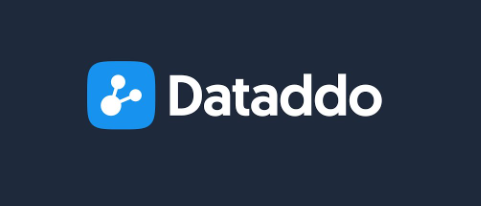
Dataddo offers a fully managed, coding-optimal outlet that is unrivaled in connectivity. While its current selection of reverse ETL destinations is smaller, they are constantly adding new options and can even build custom connectors upon request.
Here are some features of Dataddo:
- Dataddo manages all API changes, proactively monitors and fixes pipelines, and builds new connectors in around ten business days.
- By sending your data directly to a dashboarding app, you can test the validity of any data model on a small scale before deploying it fully in a data warehouse.
Pricing
Dataddo offers four pricing versions—Free, Data to Dashboards, Data Anywhere, and Headless Data Integration. The free version is made freely available for you by its community. The Data to Dashboards and Data Anywhere plans cost $99 per month. Meanwhile, the Headless Data Integration pricing version is customized pricing, and you can contact the Dataddo team for more details.
5. Rivery
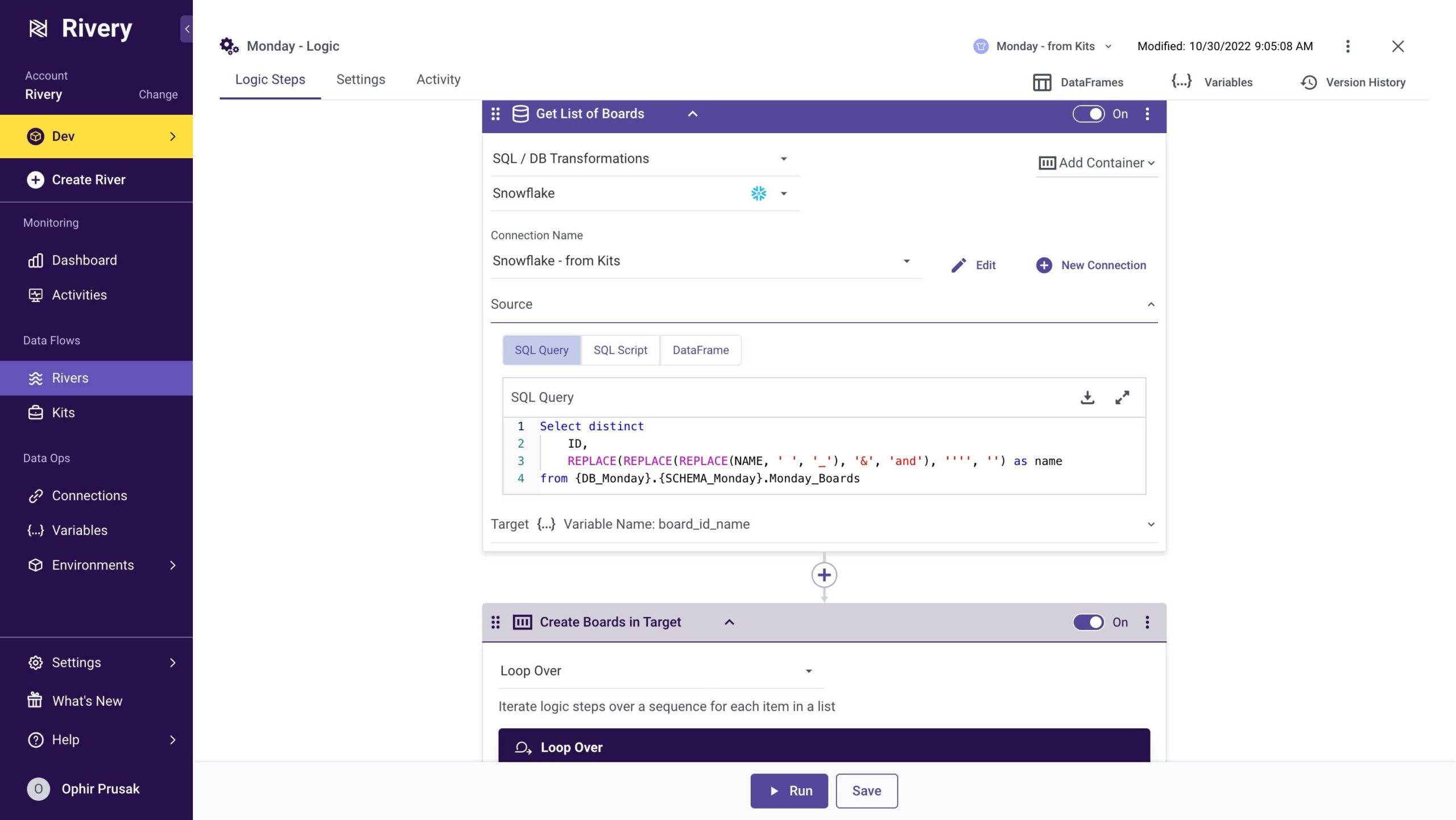
Rivery simplifies data preparation and sends valuable insights from your warehouse to operational systems seamlessly. Its reverse ETL tool is user-friendly, with a simple interface. Highly adaptable, Rivery connects with numerous destinations through APIs, giving businesses complete control over their warehouse data.
6. Hevo
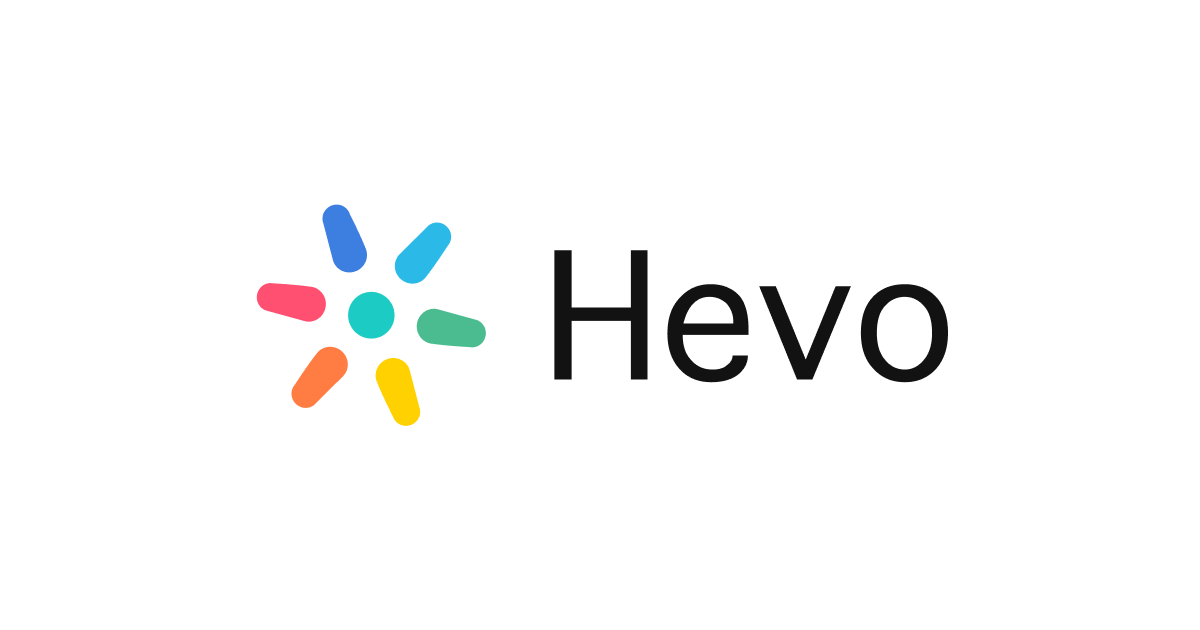
Hevo is another reverse ETL, making moving data from warehouses to other apps easier. It's all about smooth connections, scalable systems, and changing data to get it ready quickly. With Hevo, you can make sure your data is where it needs to be without a hassle. With Hevo, customers can easily create multiple workspaces under the same domain name. This feature allows for better organization and collaboration within teams.
7. Segment
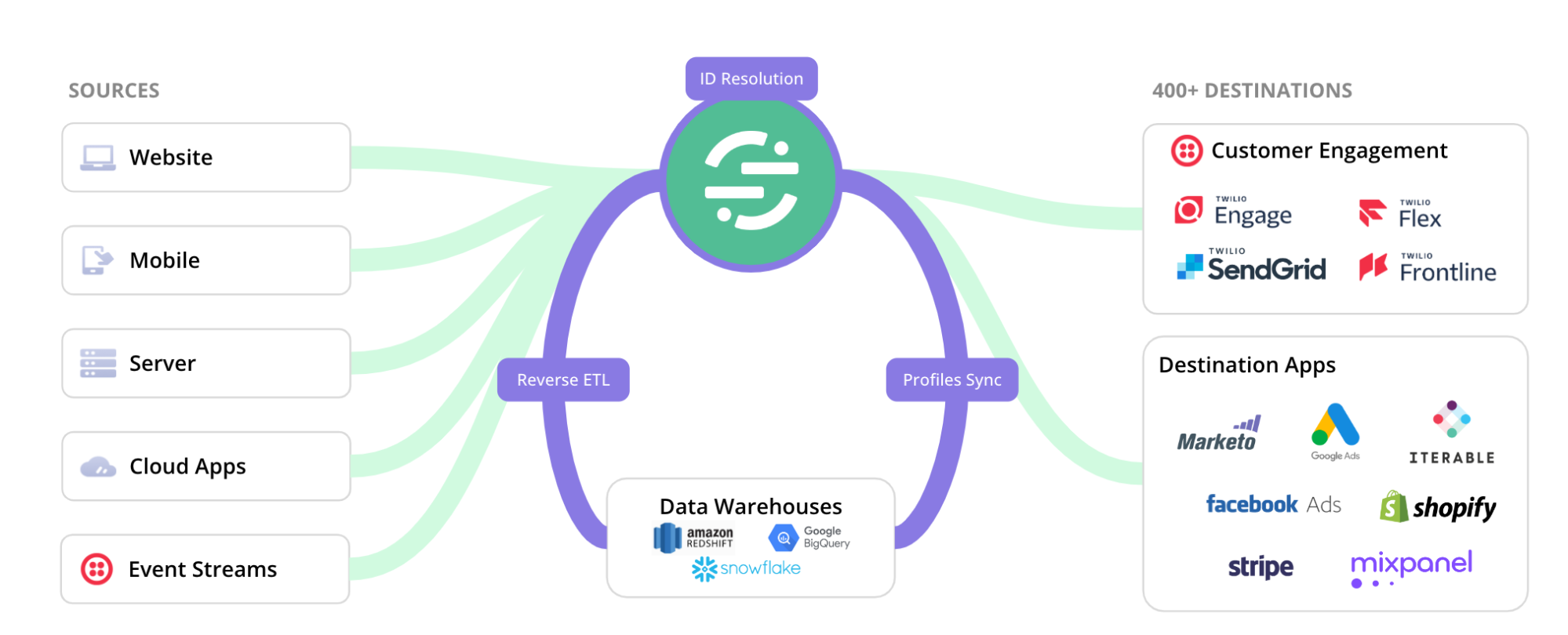
Segment is good at managing and using customer data. It collects and shares customer data with different apps right away. It's great at keeping everything up-to-date and making sure all your customer info is in one place. But, when it comes to changing data in fancy ways, it might not have all the cool features that other reverse ETL do. Segment gathers data from multiple sources, not just one, making sure businesses have a comprehensive view of their customer information. This means they can collect data from various places like websites, mobile apps, and more.
While these reverse ETL tools offer valuable functionalities, you must have some prior coding knowledge before using these tools. Additionally, managing and maintaining multiple data pipelines across different tools can add complexity. Moreover, ensuring data quality across various destinations requires ongoing vigilance. This is where Airbyte steps in! Its error handlers and schedule data sync automate your data flow between the warehouse and operational tools. Thus, your data quality is never compromised and the flow of information occurs smoothly.
Benefits of Reverse ETL
Reserve ETL offers several significant benefits for your organizations:
- Reduced Latency in Decision-Making: Traditional ETL processes might introduce delays in data-driven decisions as insights are typically generated in a separate analytics environment. Reverse ETL minimizes this latency by enabling the immediate application of insights to operational systems, promoting faster and more informed decision-making.
- Real-time Data Synchronization: By facilitating data flow back to operational systems, reverse ETL ensures that information is up-to-date in both the analytics and the operational databases. This real-time synchronization enables your organization to work with the most current and relevant data across the entire ecosystem.
- Dynamic Adaptation to Change: As your business requirements evolve, reverse ETL tools provide the adaptability needed to accommodate changes in data sources, schemas, or business rules. This dynamic nature ensures your organization stays responsive and agile in a rapidly changing business.
Things to Consider When Choosing a Reverse ETL Tool
1. Ease of Use
Look for a reverse ETL tool with a user-friendly interface and intuitive workflows. Consider whether the tool provides drag-and-drop functionality, pre-built connectors for popular data sources and destinations, and visual tools for data transformation.
2. Scalability
Consider the scalability of the reverse ETL tool to accommodate your current and future data needs. Assess whether the tool can handle large volumes of data efficiently and seamlessly scale as your data requirements grow.
3. Data Transformation Capabilities
Evaluate the tool's data transformation capabilities, including its ability to clean, enrich, and manipulate data as it moves from source to destination. Consider whether the tool supports a wide range of transformation functions, such as filtering, aggregating, and joining data sets, as well as more advanced operations like machine learning-based data processing.
4. Integration Flexibility
Assess the tool's integration flexibility and compatibility with your existing data infrastructure. Look for a reverse ETL solution that offers seamless integration with your preferred data warehouses, databases, BI tools, and other systems. Consider whether the tool supports both batch and real-time data integration, as well as APIs and SDKs for custom integrations with proprietary or legacy systems.
5. Data Governance and Security
Prioritize data governance and security features when choosing a reverse ETL tool to ensure compliance with regulatory requirements and protect sensitive information. Evaluate the tool's capabilities for data lineage tracking, access control, encryption, and compliance auditing. Look for certifications such as SOC 2, GDPR, and HIPAA compliance, which demonstrate the tool's commitment to maintaining confidentiality, integrity, and availability of your data.
Beyond the Warehouse Walls: Airbyte Empowers Reverse ETL Customization

Airbyte is a data integration platform focused on simplifying the process of building and managing data pipelines. It provides a vast library of 550+ pre-built connectors, allowing you to easily extract data from various sources like databases, SaaS platforms, etc. Airbyte provides you with transparency, cost-effectiveness, and a high degree of connector customization.
Here are some features of Airbyte:
- Destination Flexibility: Airbyte isn’t limited to loading data into data warehouses. You can also connect to operational systems like marketing or sales platforms, and CRMs. This allows you to push data back to these systems for further analysis and action.
- Schema Management: Airbyte facilitates effective schema change management, ensuring accurate data synchronization. While setting up a connection, you can specify how schema changes should be handled. Airbyte automatically checks for schema changes every 15 minutes for Cloud users and every 24 hours for Self-hosted users.
- GenAI Workflows: With Airbyte, you can store semi-structured and unstructured data directly into popular vector store destinations such as Weaviate, Pinecone, and Milvus. This helps you perform quick searches and optimize the performance of machine learning applications and AI models.
- RAG Transformations: With Airbyte, you can leverage LLM frameworks, including LangChain or LlamaIndex, to perform complex RAG transformations, such as chunking and indexing. This helps you to simplify the development of LLM applications.
- Connector Development Kit: Airbyte allows you to build customized connectors in ten minutes for your specific reverse ETL needs using its Custom Connector Kit (CDK). This provides greater flexibility compared to closed-source platforms with limited pre-built options.
- Sync Resilience: Airbyte ensures sync reliability by automatically identifying dropped records and adjusting any problematic rows. If an invalid record leads to a sync failure, Airbyte guarantees that the sync completes successfully. Additionally, it provides webhooks and notifications for real-time monitoring of your data synchronization processes.
- Developer-friendly Interfaces: With Airbyte, you can manage and handle your data pipelines in four convenient ways—UI, API, Terraform Provider, and PyAirbyte. Opt for the UI if you prefer a visual approach, or choose the API, and Terraform Provider if you’re inclined toward programming. PyAirbyte is Airbyte’s open-source Python library that includes Airbyte connectors and can be accessed using Python programming.
- Security: Airbyte prioritized data protection by adhering to industry standards. It has successfully completed a SOC Type II audit, verifying the effectiveness of its controls for safeguarding your data. Its ISO 27001 certification also ensures a robust data Security Management System is in place. Thus, you can be assured of your data pipeline’s security at all times.
Pricing
Airbyte offers four versions—Open-Source, Cloud, Self-managed, and Powered By Airbyte. The open-source is free and powered by its community. Its cloud version is based on pay-as-you-go usage, allowing you to pay only for the sources you use. The self-managed and Powered by Airbyte versions have customized pricing.
Conclusion
Choosing the right tool can be overwhelming, with so many options available. This guide has explored four popular reverse ETL tools for you, each offering unique strengths. You can quickly transform and process your data by selecting the right reverse ETL tool according to your specific requirements.
💡Suggested Reads
What should you do next?
Hope you enjoyed the reading. Here are the 3 ways we can help you in your data journey:



Frequently Asked Questions
What is ETL?
ETL, an acronym for Extract, Transform, Load, is a vital data integration process. It involves extracting data from diverse sources, transforming it into a usable format, and loading it into a database, data warehouse or data lake. This process enables meaningful data analysis, enhancing business intelligence.
This can be done by building a data pipeline manually, usually a Python script (you can leverage a tool as Apache Airflow for this). This process can take more than a full week of development. Or it can be done in minutes on Airbyte in three easy steps: set it up as a source, choose a destination among 50 available off the shelf, and define which data you want to transfer and how frequently.
The most prominent ETL tools to extract data include: Airbyte, Fivetran, StitchData, Matillion, and Talend Data Integration. These ETL and ELT tools help in extracting data from various sources (APIs, databases, and more), transforming it efficiently, and loading it into a database, data warehouse or data lake, enhancing data management capabilities.
What is ELT?
ELT, standing for Extract, Load, Transform, is a modern take on the traditional ETL data integration process. In ELT, data is first extracted from various sources, loaded directly into a data warehouse, and then transformed. This approach enhances data processing speed, analytical flexibility and autonomy.
Difference between ETL and ELT?
ETL and ELT are critical data integration strategies with key differences. ETL (Extract, Transform, Load) transforms data before loading, ideal for structured data. In contrast, ELT (Extract, Load, Transform) loads data before transformation, perfect for processing large, diverse data sets in modern data warehouses. ELT is becoming the new standard as it offers a lot more flexibility and autonomy to data analysts.
